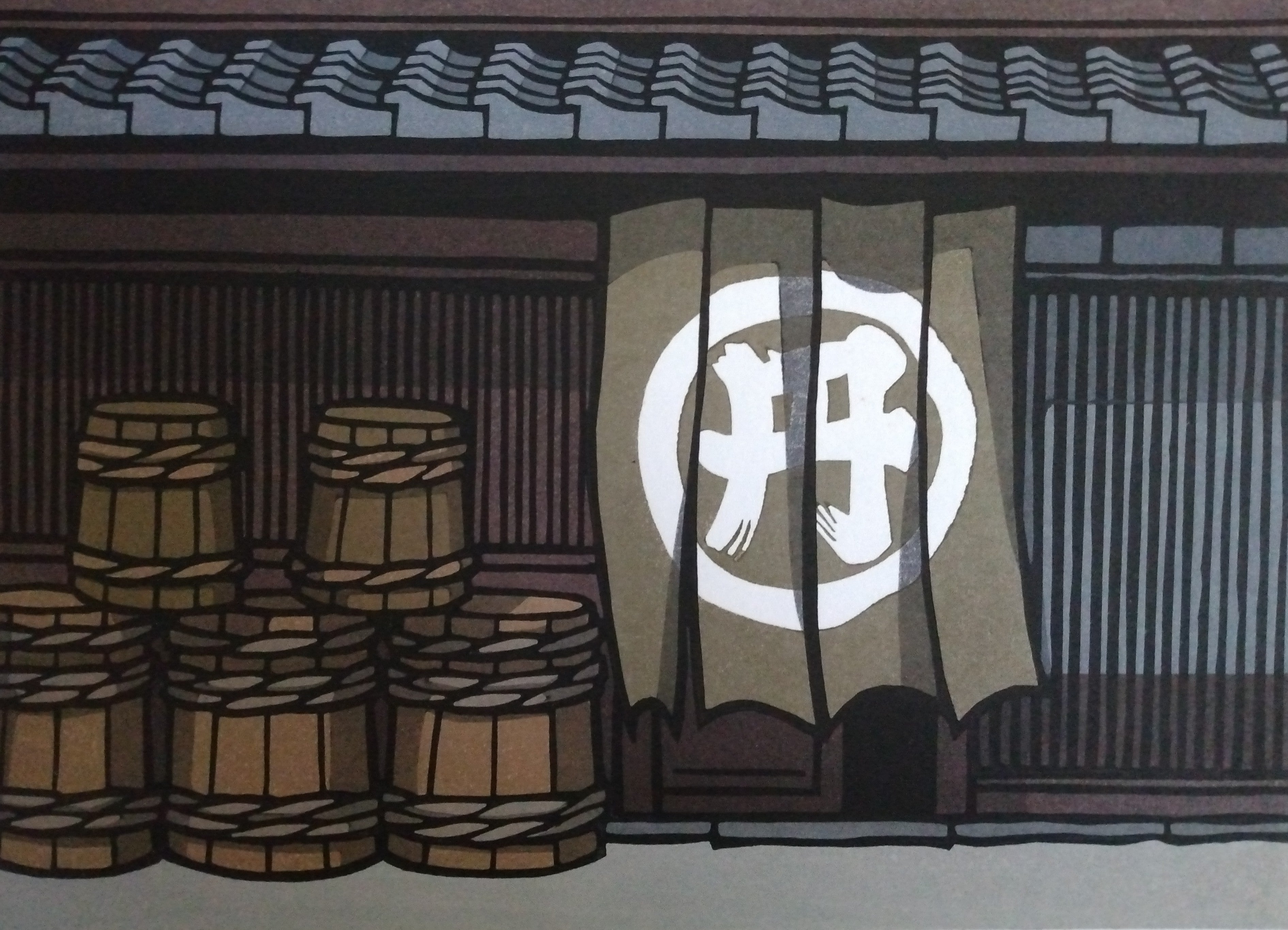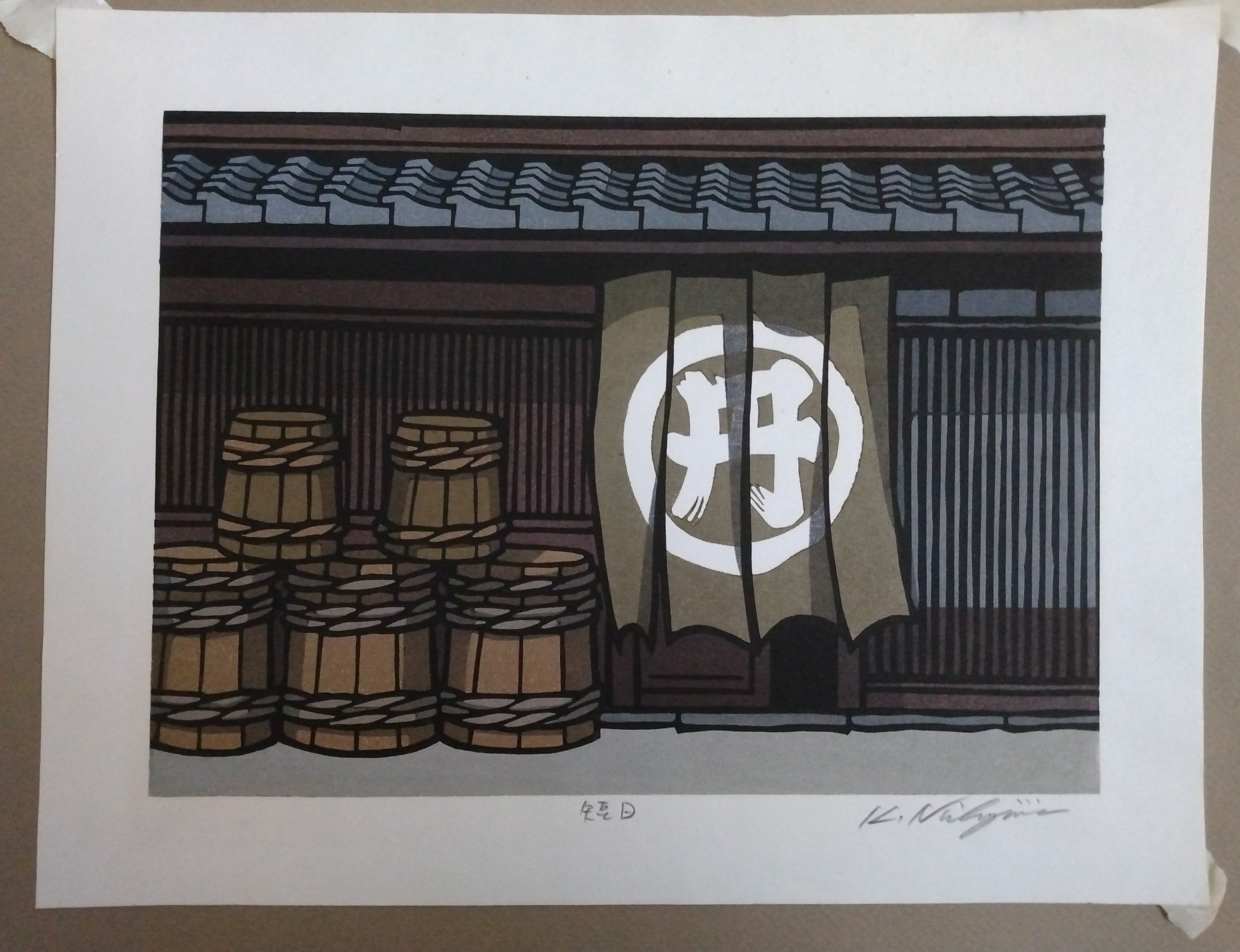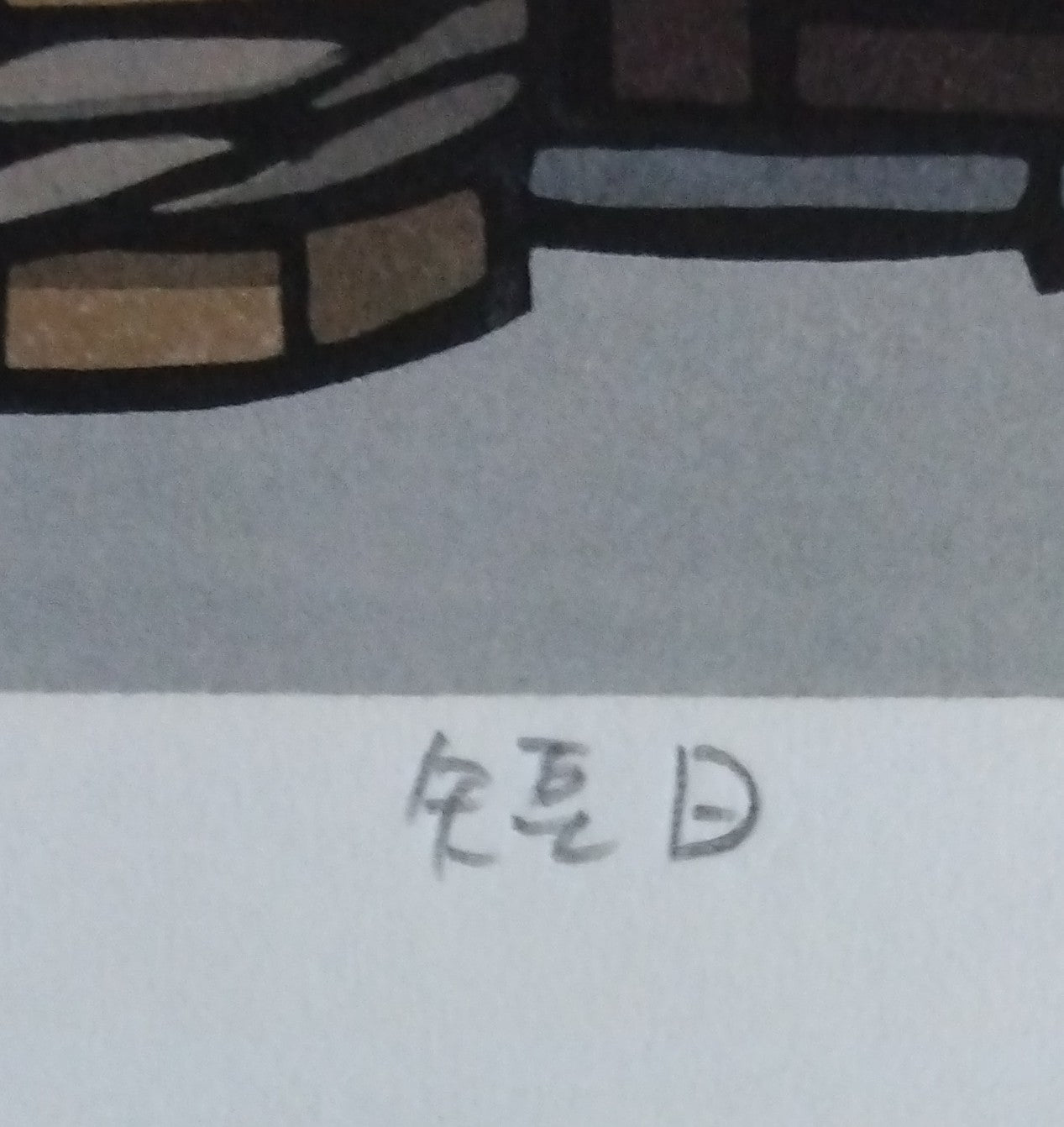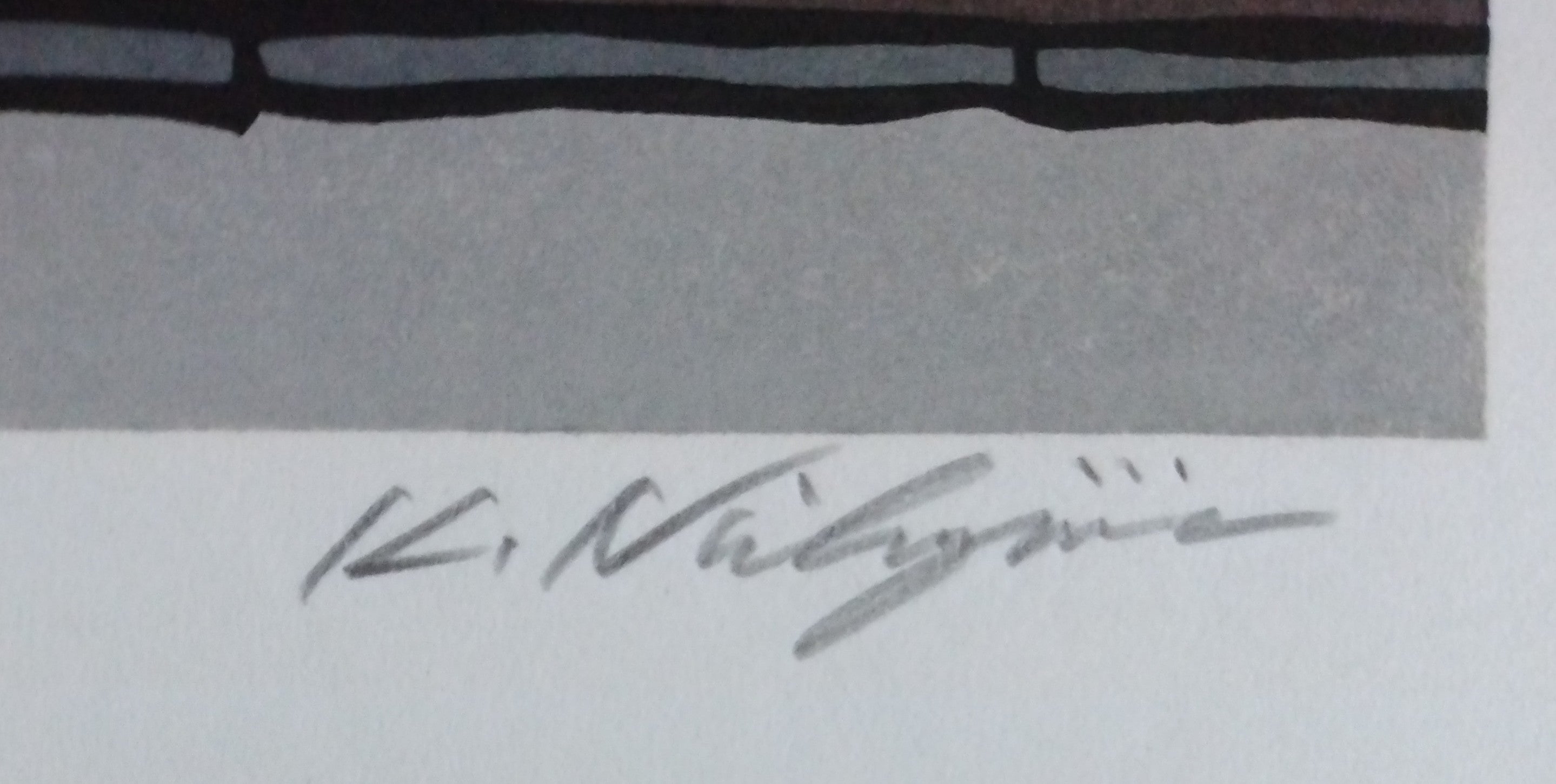Description
Woodblock Print by Katsuyuki Nishijima, "Arrow Bamboo Drying Day" (Yatake Bi). Artist signed print. Ca. 1980's. Horizontal format; H. 7.5"(19cm) X W. 10.5"(26.75cm). Excellent condition. *Fully matted, framed, & delivered option may be available for local purchasers (I-5 corridor from Seattle to Blaine, WA). Please contact for details.
The image of a wooden lattice faced building, with noren (shop curtain), and stacked barrels outside indicates some kind of artisan producer's building. It is, in fact, the Honda Miso factory, founded in 1830 in Kyoto's Kamigyo District, and looks quite the same today. The first generation master brewer was Mr. Tanbaya, and the shop curtain (pictured in the print, and now) has the kanji character, "Tan." Since their founding, Tanbaya's miso has been presented to to the Imperial Palace, then in Kyoto. Not until after the Meiji Restoration in 1868 was it available to the general public. After 1868 when Tokyo become the "Eastern Capital," Kyoto came to be known as "Saikyo" (Western Capital) and henceforth the sweeter miso made in Kyoto was called "Saikyo Miso."
The word "Yatake" in the tile refers to Japanese Arrow Bamboo, Psuedosasa japonica, (ya=arrow, take=bamboo) that was used to make arrows in the Feudal Period (and still today for practitioners of Japanese archery), and is today most famous for making high quality Japanese fishing rods. In this case, strips of Arrow Bamboo were used to bind the barrels in which miso was stored. The "Bi" in the title means "day" and is the day when the barrels were set outside to dry, thus tightening and finishing the barrel construction. This is a perfect example of one of Nishijima's images that so wonderfully portrays ancient traditions that remain little changed today.
Katsuyuki Nishijima, 1945 – present.
Katsuyuki Nishijima was born in Yamaguchi Prefecture at the southwest end of the main island of Honshu. At the age of 19, he started studying the art of woodblock printing making at the Mikumo Publishing Company in Kyoto. By the early 1970’s, he was beginning his career as a Sosaku Hanga (Creative Print) artist. As opposed to traditional woodblock prints of the 19th Century and earlier that were created by a team of artisans composed of designers, carvers, colorists, printers, and publishers; the Sosaku Hanga movement of the 20th Century highlighted the work of artists who self-drew, self-carved, and self-printed their own expressive works. Nishijima is a very popular contemporary Kyoto print artist and his works have been collected and exhibited widely in Japan, the US, and Europe.
Nishijima’s works could be called “romantic” in that there is something idealized and old-fashioned about his images. They rarely contain people; or modern elements such as cars, telephone wires, or even the ubiquitous Japanese trains. They focus on architectural elements such as tiled and thatched rooftops, verandas, noren shop curtains, the wooden latticework in front of Kyoto machiya buildings, stone walls, as well as Japanese rural landscapes. While these could be considered romantic and detached from reality, these elements still exist in modern-day Japan and are what visitors are drawn to and remember in places like Kyoto, Shigaraki, Takayama, and the like. One could say that instead of romanticizing Japanese scenery, he’s actually bringing out the essence of what is beautiful and important in humanity’s view of traditional Japan.






